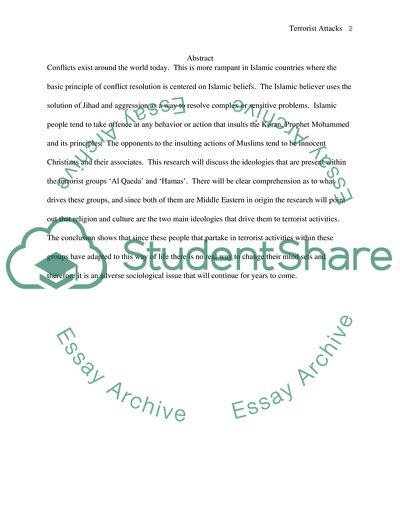Cite this document
(The Ideology and Motivation behind Terrorist Attacks of Al Qaeda and H Case Study, n.d.)
The Ideology and Motivation behind Terrorist Attacks of Al Qaeda and H Case Study. Retrieved from https://studentshare.org/military/1705476-explain-and-compare-the-ideology-and-motivation-behind-the-use-of-terrorist-tactics-by-two-of-these-groups-al-qaeda-hamas-and-the-liberation-tigers-of-tamil
The Ideology and Motivation behind Terrorist Attacks of Al Qaeda and H Case Study. Retrieved from https://studentshare.org/military/1705476-explain-and-compare-the-ideology-and-motivation-behind-the-use-of-terrorist-tactics-by-two-of-these-groups-al-qaeda-hamas-and-the-liberation-tigers-of-tamil
(The Ideology and Motivation Behind Terrorist Attacks of Al Qaeda and H Case Study)
The Ideology and Motivation Behind Terrorist Attacks of Al Qaeda and H Case Study. https://studentshare.org/military/1705476-explain-and-compare-the-ideology-and-motivation-behind-the-use-of-terrorist-tactics-by-two-of-these-groups-al-qaeda-hamas-and-the-liberation-tigers-of-tamil.
The Ideology and Motivation Behind Terrorist Attacks of Al Qaeda and H Case Study. https://studentshare.org/military/1705476-explain-and-compare-the-ideology-and-motivation-behind-the-use-of-terrorist-tactics-by-two-of-these-groups-al-qaeda-hamas-and-the-liberation-tigers-of-tamil.
“The Ideology and Motivation Behind Terrorist Attacks of Al Qaeda and H Case Study”. https://studentshare.org/military/1705476-explain-and-compare-the-ideology-and-motivation-behind-the-use-of-terrorist-tactics-by-two-of-these-groups-al-qaeda-hamas-and-the-liberation-tigers-of-tamil.


